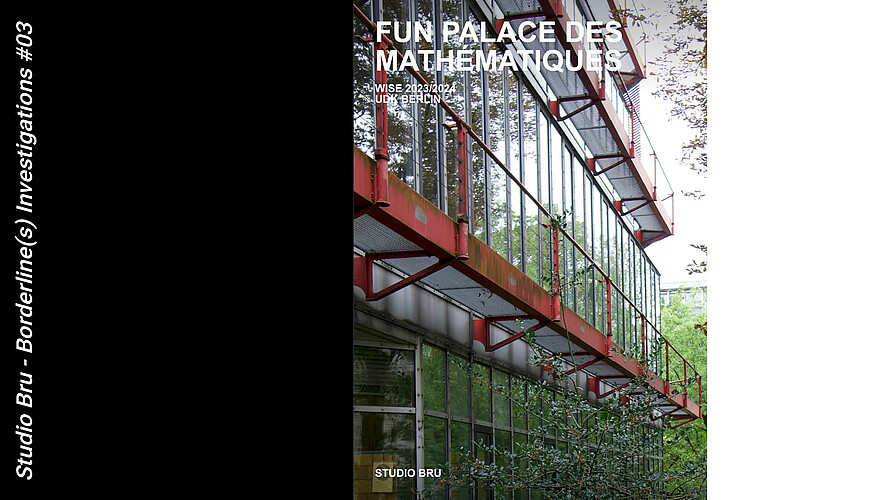FUN PALACE DE MATHÉMATIQUES
FUN PALACE DES MATHÉMATHIQUES
Project for MA and BA 3rd Year / WS 23/24
Learning from the "Fun Palace of Mathematics"
How do you re-invest in a building that is aclear reminder of a bygone era?
The mathematics building at Berlin’s Technische Universität, designed by the architects Georg Kohlmaier and Barna von Sartory, may not be present in architectural history, but it has all the hallmarks of its era. A vast liner of glass and metal, it evokes both industrial imaginaries and the pop monumentality of Archigram’s collages. Like the Centre Pompidou, the building stands at the crossroads of the twentieth century. Conceived in the liberating spirit of the early 70s, its construction started after the first energy crisis. So almost against its own nature, the building had to submit to unforeseen environmental constraints not envisioned in its initial plans. Is it possible to maintain the quest for near-total transparency and constructive lightness under the premise of new thermal requirements? Every glazed surface and every thickness of insulation becomes the subject of bitter negotiations.
In this way, the building perhaps even became, almost unwillingly, one of the first «eco-modern» buildings, having to reconcile a priori antagonistic objectives.
Today, 50 years after its construction, the question has evolved even further. Evolving standards, environmental imperatives and the aging of the building materials have inevitably blunted the building’s appeal, calling its durability into question. It’s time to re-examine it , armed with knowledge of its former constructive and societal context.
In this moment of questioning, we have a great opportunity. We are faced with a building that hasn’t lost the slightest bit of its inherent expressiveness. Its construction method remains legible. We can therefore begin to re-understand it, by distinguishing between the intentions of its period and the contemporary challenges. Even if the buildings technical equipment does not live up to todays environmental standards, perhaps it has retained a different acuity in other places.
It’s important to know how to look at the building, both in its constructive rigor and in the richness of its ambiences. The assembly of a railing or the design of a light fitting are not simply technical arrangements. They also create a particular atmosphere that you need to be able to describe.
Analyzing a building therefore inevitably raises questions of representation. The technical and impressionistic approaches should not be seen as antagonistic, but rather as mutually nourishing.
We can already recognize one essential quality in this building: its optimism. Its vigor and clarity testify to our confidence in the virtues of steel construction. Without obeying pre-established constructional norms, it finds innovative assemblages, both plastic and constructive. In response to this inventiveness, it’s up to us to propose new intriguing narratives. In this way, by combining the technical and the sensitive, we can imagine new lifes for this building and live up to its architectural enthusiasm.
Studio Introduction:
18.10.2023
10:30 AM CET
Room 312
